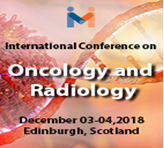Agenesis of gallbladder and cystic duct: Diagnosed outside the operating room clinical case presentation and review of literature
Gallbladder agenesis could be a rare birth defect of the biliary tract. The diagnosis is typically made during surgery. It’s been proven to be very difficult to create an accurate preoperative diagnosis of agenesis of the gallbladder in symptomatic patients. The aim of this presentation is to share our experience a couple of case of middle- aged lady who presented with symptoms of biliary colic. Ultrasound examination revealed cholelethiasis with contracted gallbladder. On Contrast CT examination gallbladder couldn't be visualized. On further imaging as MRCP diagnosis of gallbladder agenesis may be confirmed. This helped in avoiding unnecessary surgery and patient was conservatively treated.
A middle-years lady presented to surgical department with symptoms of right upper abdominal pain and dyspepsia. On examination she was hemodynamically stable and there was no fever. On examination abdomen was soft with negative Murphy’s sign and active peristalsis. Laboratory tests were within normal limits. Ultrasound imaging revealed cholelethiasis with contracted gallbladder. Subsequently the Contrast CT scan of abdomen was done which revealed non-visualization of gallbladder and cystic duct. Further to substantiate MR Cholangiogram was done and therefore the gallbladder and cystic duct were found to be absent with remainder of the additional hepatic biliary tree to be normal.
Agenesis of the gallbladder may be a very rare condition and might create difficulties for surgical team when diagnosed during lap choly. With the event of higher imaging modalities it's been possible to diagnose gallbladder agenesis before surgery. Correct preoperative diagnosis can help to avoid unnecessary surgeries and reduce exploration complications.
It is estimated that 23% of patients with gallbladder agenesis present with symptoms of biliary colic. Out of those patients, 90.1% will present colicky pain within the right hypochondria, 66.3% with post prandial nausea and vomiting, 37% with acid peptic symptoms and 27% CBD stones. These symptoms are often attributed to the speculation of biliary dyskinesia. it's well-known that ultrasound is that the imaging technique of option to assess the gallbladder; but difficulty in reporting arises when gallbladder is either contracted or atrophic. WES ((Wall, Echo and Acoustic shadow) triad was described for diagnosis of gallstones. Some ultrasound examinations performed on patients of agenesis of gallbladder can report cholelethiasis and this will be explained as a result of the very fact that radiologist can misdiagnose the perioral tissue, sub hepatic peritoneal folds, duodenum or calcified hepatic lesions with the WES triad.
 Spanish
Spanish  Chinese
Chinese  Russian
Russian  German
German  French
French  Japanese
Japanese  Portuguese
Portuguese  Hindi
Hindi 



